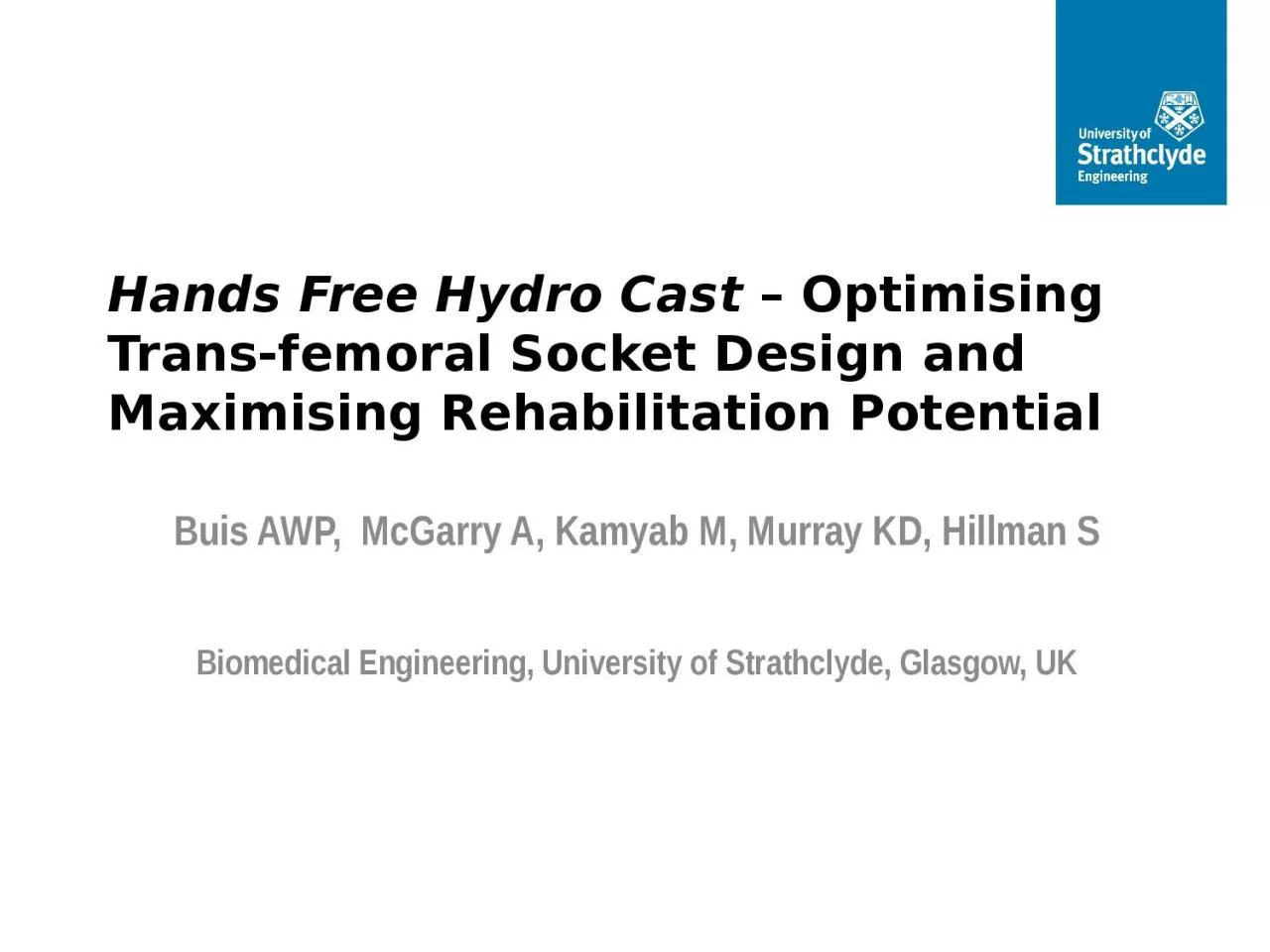

Buis AWP McGarry A Kamyab M Murray KD Hillman S Biomedical Engineering University of Strathclyde Glasgow UK Introduction Statement of problem Why Implementation of a good fit ID: 934833
Download Presentation The PPT/PDF document "Hands Free Hydro Cast – Optimising Tr..." is the property of its rightful owner. Permission is granted to download and print the materials on this web site for personal, non-commercial use only, and to display it on your personal computer provided you do not modify the materials and that you retain all copyright notices contained in the materials. By downloading content from our website, you accept the terms of this agreement.
Slide1
Hands Free Hydro Cast – Optimising Trans-femoral Socket Design and Maximising Rehabilitation Potential
Buis AWP,
McGarry
A,
Kamyab
M
,
Murray
KD,
Hillman S
Biomedical Engineering, University of Strathclyde, Glasgow, UK
Slide2Introduction
Statement of problem
(Why)
Implementation of a “good” fit
Methodology
(What & How)
Results
conclusion
Slide3Statement of problem
The purpose of a socket is to provide a mechanical connection between the skeleton and the rigid structure of the prosthesis.
The dominating concepts are the Quad and
Ischial
cont.
How stabilising are those sockets?
Are they reproducible?
Can we do better?
Slide4Implementation of a “good” fitSocket fit criteria:
As “stiff” as possible coupling
No tissue damage
Minimum discomfort
Implementation tools;Surface matchingVolume matching
Is it possible to distribute the load to the different transmission elements in a controlled way? Yes, if the force flow distributes itself proportionally to the stiffness of the available path!
Slide5Implementation of a “good” fit
Rubber Block
Metal
Block
Rubber Block
“Let nature deform the soft tissues in such a way that the stiffest path principle is achieved”
Slide6Copy of the existing
Ischial
containment socket.
Pressure cast socket according the Hydro cast principle.
Methodology
Slide7Methodology (work packages)
Dynamic interface pressure
(ideally shear)
Femoral stability
User performance outcome measures
Kinetic (forces)
Kinematic (position in space and time)
Slide8Methodology
Dynamic interface pressure
Validated
Tekscan
™
pressure measurement system
Slide9Methodology
Femoral stability
Slide10Methodology
User performance outcome measures
Kinetic (forces)
Kinematic (position in space and time)
Slide11Dynamic interface pressure
Hydro
Ischial
containment
A
M
P L
Results
Slide12Video
Ultra
sound
X section socket
Medial
Anterior
Sensor
Results
Slide13Results
A
Medial
Hydro Cast
Lateral
P
Ischial
Containment
A
Medial
Lateral
P
Slide14User performance outcome measures
Summary
Speed
slightly
higher with the old socket, but it was noted that the subject’s speed increased as she became more accustomed to the new socket.
Stride length slightly longer with the old socket, effected via increased step length bilaterally.
Cadence and double support time much the same for both conditions.
Single support time on the right a little decreased with the new socket.
Clear differences between
pistoning
and gapping were observed. Indicating that the Hydro concept is more stable.
Results
Slide15Conclusion
No significant pressure distribution differences.
Shear should be investigated!
No significant Kinetic and kinematic differences.
Significant stability differences in direction,
pistoning and gapping in favour of the Hydro concept prosthesis.
Slide16Thank you!
Slide17